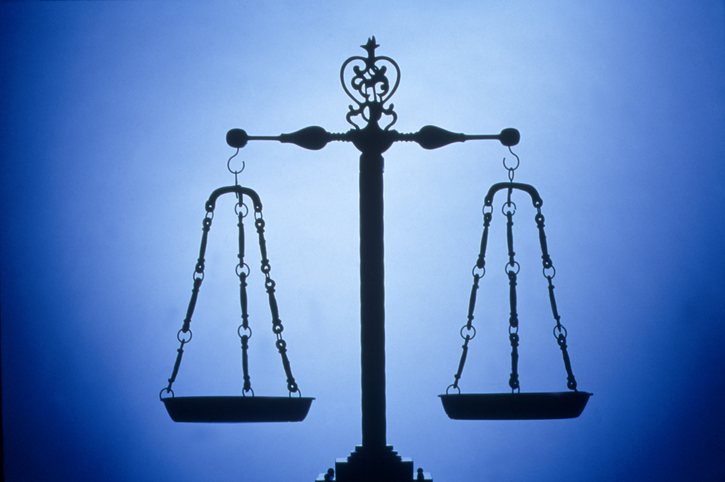
Best Practices for Not-for-profit Board Oversight
It’s often only after someone joins a not-for-profit board that they suddenly realise the full weight of their duties and responsibilities. Before someone accepts a position on a not-for-profit board, they need to be aware that not-for-profits have been under a great deal of scrutiny in recent years—much more so than ever before.
It goes without saying that not-for-profit boards are accountable and liable for the decisions and activities of the organisation. Within their responsibilities, the board must act in an ethical manner and be good stewards of the organisation’s resources. The legal responsibilities that not-for-profit boards accept are no less important than the legal responsibilities of corporate boards.
While not-for-profit organisations are different from corporations in many ways, they have some similarities on how they’re structured. Not-for-profit board oversight ensures that not-for-profit boards will avoid some of the mistakes that caused corporations and other not-for-profits to face embarrassing headlines in recent years. Best practices for good not-for-profit governance require trust, accountability, and transparency in all the board’s interactions and activities. The right digital tools, such as a board portal management system, assist not-for-profit boards with proper not-for-profit oversight.
Related article: Setting Not-for-profit Board Expectations & Increasing Effectiveness
Don’t Overlook the Importance of Board Oversight and Accountability
Without trust, transparency, and accountability, not-for-profit organisations of today simply can’t be sustainable. At any time, not-for-profit boards that operate under a veil of obscurity run the risk of losing their financial supporters. It’s a great risk that’s simply not worth taking.
Your board is on the frontline in good times and bad. Stakeholders and owners are looking for assurance that their investment in your nonprofit is helping to fulfill its mission.
While not-for-profits don’t have shareholders to be accountable to, not-for-profits have to work hard to ensure the following stakeholders have a level of trust and comfort in the not-for-profits they support:
- Members
- Donors
- Volunteers
- Staff
- Community
- Other organisations
Appropriate not-for-profit board oversight ensures responsibility and that leads to responsiveness. Your stakeholders will surely recognise that your board has clear objectives and is proactive in the area of good governance.
Related article: Re-Evaluating Your Not-for-profit Budget for Board Technology
Best Practices for Not-for-profit Board Oversight
Because of missteps in the corporate and not-for-profit worlds, best practices for not-for-profit board oversight continue to evolve. It’s essential for not-for-profit board members to learn about best practices for good governance and put them into practice.
Here is a checklist to get you started:
- Communicate with your stakeholders specifically and regularly.
- Most regulations require not-for-profits to have at least one meeting every year. Generally, one meeting isn’t sufficient for proper oversight. Schedule as many meetings as the board needs to fulfill its duties and support the not-for-profit’s mission.
- Establish a formal policy and process for setting appropriate compensation for the executive director and approving the compensation package.
- Understand the government’s expectations for what constitutes reasonable executive director compensation, so that the board doesn’t run the risk of violating regulations for excessive not-for-profit executive compensation.
- All board members should understand IRS Form 990 and review it before submitting it to the IRS to ensure that it accurately reflects your not-for-profit’s financial activities and meets all compliance standards. Encourage board training for board members who are not familiar with this process.
- Establish conflict of interest and whistleblower policies and review them annually.
- Establish a process for your annual audit, and set up a meeting for the board to directly engage with the audit firm to discuss the results.
- Establish a process to write up a simple end of the year annual report that’s suitable to share with stakeholders. Your annual report should highlight your not-for-profit’s achievements and lend transparency into your organisation’s financials.
Related article: Board Evaluations: The Complete Guide for Not-for-profits
How a Board Portal Supports Not-for-profit Board Oversight
Advances in technology made digital software solutions available for responsible not-for-profit leadership. A BoardEffect board portal management system is an effective tool to help not-for-profit boards demonstrate ethical standards.
Here are some of the important ways that a board portal supports not-for-profit board oversight:
- Automated survey tools. Annual board self-evaluations offer transparency to stakeholders. This practice demonstrates that not-for-profit boards are committed to improving their leadership performance. BoardEffect surveys are fully automated within the security of your board portal. They’re intuitive, efficient, and easy to use.
- Unlimited cloud storage. BoardEffect offers unlimited cloud storage for important founding documents and compliance documents. This allows boards to pull data quickly and easily to share it with the appropriate parties in a timely manner, which demonstrates transparency. The portal provides an accessible place to store financial records, policies, agendas, and meeting minutes.
- Strong security. BoardEffect’s board management system offers state-of-the-art security to protect against viruses, malware, and hackers. Security protocols include encryption and third-party testing without incurring extra costs for IT.
- Supports compliance. It’s crucial for not-for-profit boards to practice accountability and transparency around legal and regulatory compliance. BoardEffect simplifies board activities for annual filings and audits and allows them to create a permanent electronic record for regulators, auditors, and stakeholders that support the organisation. Good compliance practices greatly reduce the potential for internal or external fraud.
- Supports good stewardship. Stakeholders expect not-for-profit boards to work efficiently. A board portal streamlines and automates many governance activities and it’s a great way to demonstrate to stakeholders that the board is being good stewards of their donations and assets.
- Reduces problems associated with human error. Automation supports accuracy in board books, board agendas, financial reports, and meeting minutes.
Any hint of fraud or corruption can set your not-for-profit back and harm the reputation you’ve worked so diligently for. It’s possible for stakeholders to misconstrue information, even when your organisation practices good nonprofit oversight. Best practices for transparency and accountability prove that your not-for-profit is well-governed and makes sound, informed decisions.
Good governance practices will inspire your supporters to volunteer and give larger donations. Also, they’ll be willing to spread the news about the good work that your not-for-profit does for your community. A BoardEffect board portal supports good governance practices and sets you on pace for strong accountability and sustainability. It’s a wise investment to support current and future board leadership.
Related article: The Board’s Role in Developing a Strategy Plan for a Not-for-profit







